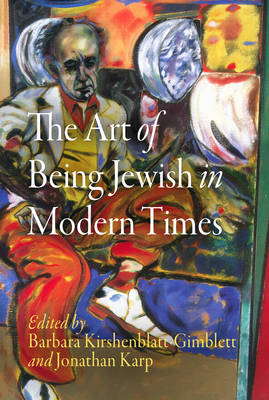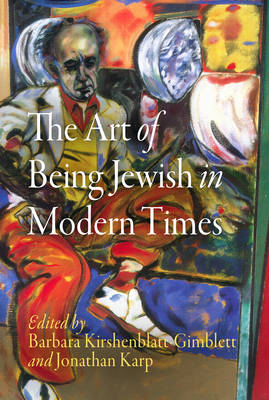
- Retrait gratuit dans votre magasin Club
- 7.000.000 titres dans notre catalogue
- Payer en toute sécurité
- Toujours un magasin près de chez vous
- Retrait gratuit dans votre magasin Club
- 7.000.000 titres dans notre catalogue
- Payer en toute sécurité
- Toujours un magasin près de chez vous
The Art of Being Jewish in Modern Times
36,45 €
+ 72 points
Description
The wide-ranging portrayal of modern Jewishness in artistic terms invites scrutiny into the relationship between creativity and the formation of Jewish identity and into the complex issue of what makes a work of art uniquely Jewish. Whether it is the provenance of the artist, as in the case of popular Israeli singer Zehava Ben, the intention of the iconography, as in Ben Shahn's antifascist paintings, or the utopian ideals of the Jewish Palestine Pavilion at the 1939 New York World's Fair, clearly no single formula for defining Jewish art in the diaspora will suffice.
The Art of Being Jewish in Modern Times is the first work to analyze modern Jewry's engagement with the arts as a whole, including music, theater, dance, film, museums, architecture, painting, sculpture, and more. Working with a broad conception of what counts as art, the book asks the following questions: What roles have commerce and politics played in shaping Jewish artistic agendas? Who determines the Jewishness of art and for what purposes? What role has aesthetics played in reshaping religious traditions and rituals? This richly illustrated volume illuminates how the arts have helped Jews confront the various challenges of modernity, including cultural adaptation and self-preservation, economic diversification, and ritual transformation. There truly is an art to being Jewish in the modern world--or, alternatively, an art to being modern in the Jewish world--and this collection fully captures its range, diversity, and historical significance.Spécifications
Parties prenantes
- Editeur:
Contenu
- Nombre de pages :
- 464
- Langue:
- Anglais
- Collection :
Caractéristiques
- EAN:
- 9780812220476
- Date de parution :
- 27-08-08
- Format:
- Livre broché
- Format numérique:
- Trade paperback (VS)
- Dimensions :
- 155 mm x 234 mm
- Poids :
- 793 g






